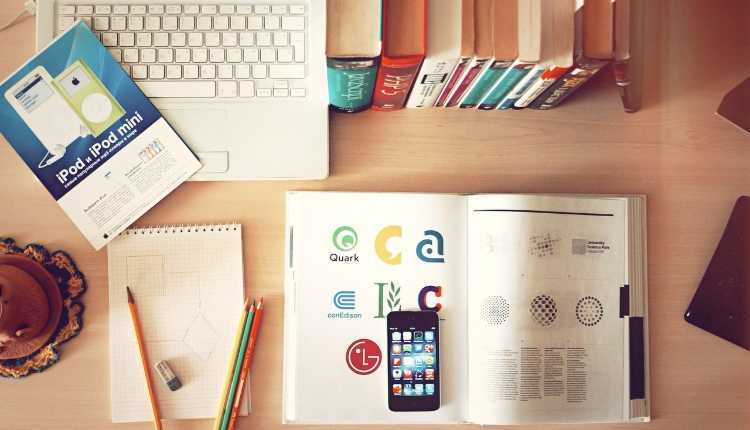Times are changing!
The educational system is being redefined.
Blended learning is receiving worldwide attention but have you ever thought that what does the term exactly mean and how could millennials make the best out of it?
Continue reading below to know more:
How can we define blended learning?
It is a system of education where everyone can gain knowledge through both online tools, materials, and traditional face to face teaching methods.
Let us take a peek down the history line of blended learning system:
1. The early 1840s
- Distance learning came into existence.
- Sir Isaac pitman was the brain behind this system.
- He promoted shorthand related courses.
- He used postcards for the feedback and assessment processes.
2. The beginning of 1960s and 70s
- Computer-based training was invented
- It became easier for group training
- Employees used character-centred information to gain access to various data
3. The continuation of 1970s and 1980s
- Video networks were given importance and were integrated into the employees training process
- Onboarding employees became easier
- Interactive and fun-based training received attention
- Two-way interaction(learners-peers and vice versa)was possible
- Online submission of assignments became common for learners
4. The 1990s’ story
- People used cd ROMs for storing and delivering better content
- Graphics, sound and the videos gained worldwide attention
- Connectivity became easier
- E-learning courses were born
5. The current scenario
- Blended learning received a lot of importance
- Multiple learning options like webinars, seminars, and e-tutorials are preferred by learners
- There are a lot of tech-based tools and materials available for people
How does blended learning benefit the Millennials?

1. Easier to learn
Blended learning has made it easier for people to learn about new things by sitting in the comfort of their homes. It has successfully kindled the educational interest of millennials. Imagine there is heavy rain in your state, will you be able to attend college or your educational hub?
You would not be able to, right.
However, blended learning helps you by solving this problem. These days many universities are offering a mixture of offline and online courses. It is your choice to choose how to attend classes.
2. Building self goals
Unlike the traditional system of learning where teachers set timelines for students to accomplish their tasks, in blended learning, students are allowed to choose and build their timelines based on their learning goals. Hence, this has helped millennials to remain self-motivated for a longer period.
Protip- make a checklist, write down your goals, and pin it to the wall right in front of you. You will feel motivated to do your work and achieve your goals in a better way.
3. Long time focus
Isn’t it boring to sit in a class all day long?
The advent of blended learning has made it easier for people to sit for hours and choose a self-paced course so that they might attend the class whenever they feel like attending. The best way millennials can learn is by allowing themselves to have flexibility in their timelines.
A research study has shown that almost 80% of the population prefers to do things as per their timelines rather than fixing themselves in a strict schedule.
4. The process of feedback
Earlier it was a difficult task to know the thoughts of a student about his/ her teacher. These days blended learning has made it easier for them to record their feedback about the learning techniques. If at all, there is any problem in the learning system, it can be easily sorted out by drawing suggestions from the feedback form.
Millennials’ suggestions are being considered as a very important aspect of improving and adding more innovation to blended learning techniques.
5. Future preparation
Blended learning helps students in preparing themselves for future challenges. It becomes easier to be technologically advanced when they use tools for educating themselves. Whether it is an engineering course or a medical field, blended learning offers millennials “n” number of materials to improvise their standards and learn new things.
6. Better decision-making skills
It is an obvious fact!
The more millennials choose to use blended learning techniques, the more focus they gain, and the firmer decisions they make. Also, blended learning provides access to many decision-making tools for students, which enables them to make things better.
7. Increase in computer skills
Earlier, when students attended classes, they weren’t technologically sound. With the increase in the use of technology, it has become easier to spread the need for computer literacy among people.
8. Saving time
Traditional teaching methods consumed a huge amount of time of the students leaving less space for them to learn new things. However, millennials have benefited hugely by using blended learning techniques because these methods save time and reduce the effort consumed in transport. One can easily sit at home and choose to learn the subjects.
9. Bringing innovation and change
Normally education has become expensive these days, and not everyone can afford them. However, blended learning has allowed students the flexibility of gaining education and becoming more innovative. For instance: if a farmer’s son wishes to know more about agriculture, he can simply use the internet and join free online classes to educate himself about agriculture.
10. Sharing knowledge
Blended learning has certainly helped millennials in exchanging their knowledge in a better way. For instance,- learners can exchange their materials offline or use online portals to share useful information and give their views on certain topics. Earlier, students did not have that kind of facility in their classes. The classes were held in a mechanistic way, where students had to reach the educational centre, listen to whatever the teacher says, writes, and take note of all of the words their teacher spoke. However, blended learning has turned the tables by making it easier to share knowledge globally.
Conclusion:
Although education has reached new heights in today’s world, blended learning has certainly added more zest to it. Millennials have benefitted from it in numerous ways, will continue to reap the same in the future and bring more innovation in the learning system.
All we need is patience and a strong mindset to bring change in the world and spread the importance of blended learning techniques.


